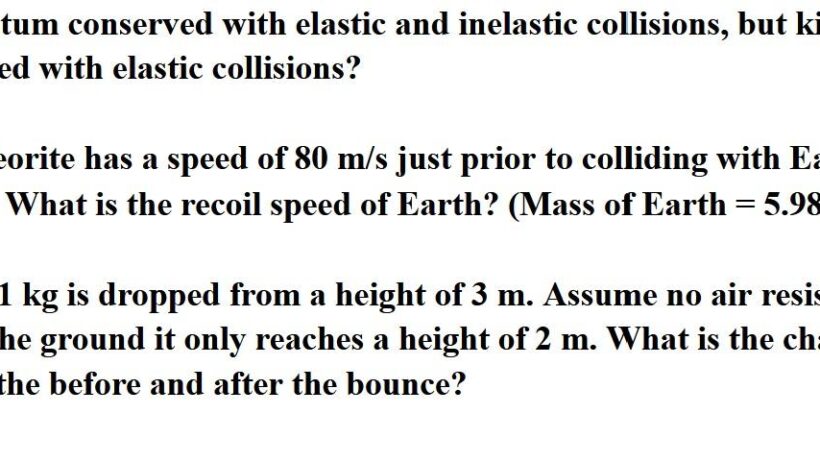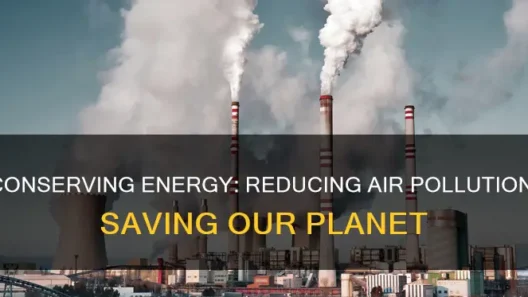When it comes to the conservation of energy, one might wonder, “Is kinetic energy conserved in elastic versus inelastic collisions?” This question invites individuals to explore a fundamental concept in physics and challenges their understanding of energy transformation during collisions. To unravel this topic, it’s essential to differentiate between elastic and inelastic collisions while assessing how kinetic energy behaves in each scenario.
At the outset, let’s define the two types of collisions. An elastic collision is one in which both momentum and kinetic energy are conserved. Think of a game of billiards; when one ball strikes another, both momentum and energy are transferred without any loss. In contrast, an inelastic collision occurs when momentum is conserved, but kinetic energy is not. A classic example is a car crash, where some kinetic energy is transformed into other energy forms, such as thermal energy and sound.
Now, consider what happens during an elastic collision. Imagine two perfectly rigid spheres colliding head-on. Before the collision, each sphere has its own kinetic energy dependent on its mass and velocity, as described by the equation KE = 1/2 mv². After they collide, the kinetic energy is redistributed, but the total kinetic energy remains unchanged. This conservation is a hallmark of elastic collisions and can be mathematically illustrated: the sum of the kinetic energies before collision equals the sum after the collision. How remarkable it is that in an ideal world, energy is conserved perfectly!
On the flip side, inelastic collisions diverge significantly from this principle. When two objects collide inelastically, such as cars smacking into each other, they often crumple together, leading to a profound transformation of kinetic energy. Some energy dissipates as sound, heat, or deformation of the materials involved. The famous equation of momentum conservation still holds true, as momentum can neither be created nor annihilated. However, kinetic energy takes a hit. The intriguing part is that one might intuitively expect the kinetic energy to remain intact, similar to elastic collisions, but it does not.
Let’s delve into a bit of physics jargon to enrich our exploration. The coefficient of restitution (e) is a crucial factor distinguishing elastic from inelastic collisions. This coefficient measures the elasticity of collisions, with a value of 1 indicating a perfectly elastic collision, while a value of 0 suggests a completely inelastic collision. The relationship between kinetic energy and the coefficient of restitution offers insight into the energy transformations occurring during the event, enhancing the understanding of energy conservation’s nuances.
To illustrate further, consider how real-world applications utilize the principles of kinetic energy conservation. Engineers apply these concepts to design safer vehicles. By understanding how energy transforms during inelastic collisions, automotive engineers can develop crumple zones that absorb kinetic energy during car accidents. This not only protects passengers by preventing the full extent of energy from being transferred into their bodies but also highlights the practical application of these physics principles in everyday life.
However, this exploration of kinetic energy conservation brings to light an interesting dilemma. In an era where human activities continually pose threats to the environment, the implications of energy transformation during collisions can serve as a metaphor for larger ecological challenges. For instance, as energy dissipates during inelastic collisions, does humanity face a similar fate when natural resources are consumed? Are we experiencing our “inelastic collision” with nature, transforming and wasting valuable resources instead of preserving them? Such questions provoke deep reflection on our environmental stewardship.
The implications extend even further when considering energy in different contexts—like that of sports or even celestial mechanics. In sports, athletes leverage the principles of kinetic energy to maximize their performance from running to kicking a soccer ball. Similarly, in celestial mechanics, the conservation of energy plays a pivotal role in understanding the movements of planets and stars, where gravitational forces interact with kinetic energy to shape the cosmos.
In conclusion, whether kinetic energy is conserved in elastic versus inelastic collisions sheds light on broader themes of energy conservation and transformation. Elastic collisions show a remarkable balance, while inelastic collisions expose the complex realities of energy loss and transformation. Embracing this knowledge equips us to address not only scientific challenges but also the pressing environmental issues of our time. Ultimately, we must ask ourselves: Are we ready to learn from physics about our ephemeral relationship with energy, both on terrestrial and cosmic scales?







